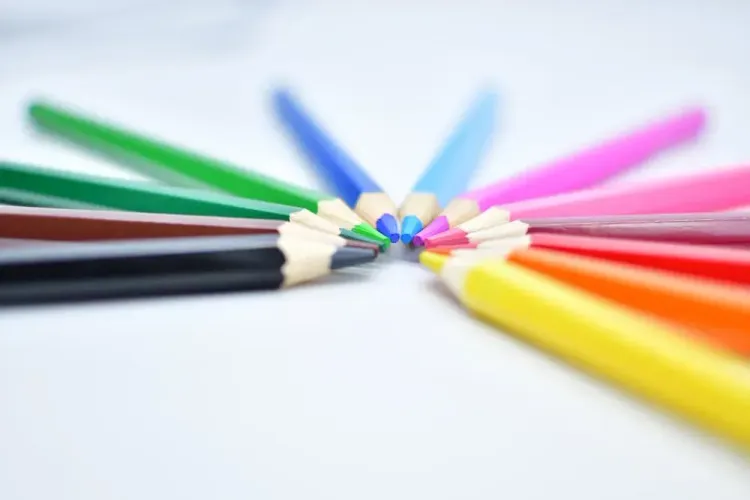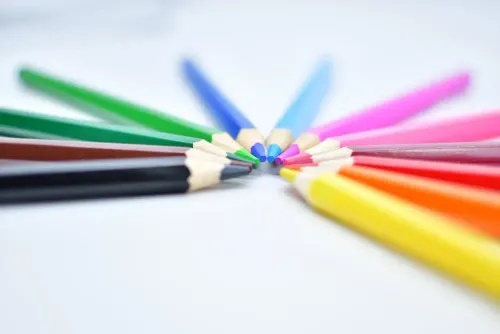In the ever-expanding digital landscape, blogging has become an integral medium for sharing thoughts, ideas, and expertise with the world. A well-crafted blog is not only about the words it contains but also the visual experience it offers to its readers.
One key element that significantly impacts this visual experience is the colour palette you choose for your blog. Believe it or not, colours can evoke emotions, influence perceptions, and even shape the overall success of your blog. In this article, we delve into the fascinating realm of colour psychology and explore how you can select the perfect colour palette to enhance your blog's impact.
Unveiling the Power of Colours
Colours are not merely aesthetic elements; they possess a remarkable psychological influence on human behavior, emotions, and perceptions. The field of colour psychology delves into the ways different colours can trigger specific feelings and reactions. Understanding these associations can help bloggers make informed decisions about which colours to incorporate into their blogs.
The Language of Colours
Colours have a unique language that communicates beyond words. Here's a glimpse into the emotions commonly associated with different colours:
Red: Passion, energy, urgency, and excitement.
Blue: Calmness, trust, professionalism, and reliability.
Yellow: Cheerfulness, positivity, creativity, and warmth.
Green: Growth, harmony, freshness, and balance.
Purple: Royalty, luxury, creativity, and mystery.
Orange: Enthusiasm, vitality, friendliness, and adventure.
Black: Elegance, sophistication, power, and authority.
White: Purity, simplicity, clarity, and innocence.
Aligning Colours with Blog Goals
The colours you choose should align with the goals and tone of your blog. Are you aiming to create a tranquil space for meditation and reflection? Blue and green tones might be your best bet. Is your blog focused on adventure and exploration? Consider incorporating vibrant shades of orange and yellow. Aligning your colour choices with your content can subconsciously enhance the connection readers have with your blog.
Crafting Your Blog's Colour Palette
Now that we've scratched the surface of colour psychology, let's dive into the nitty-gritty of creating a harmonious colour palette for your blog.
1. Understand Your Audience
Before you start experimenting with colours, take a moment to understand your target audience. Consider demographics like age, gender, and cultural background. Different colours have varying meanings and interpretations across cultures, so it's essential to ensure that your chosen palette resonates positively with your audience.
2. Limit Your Palette
While the allure of a vast array of colours may be tempting, it's best to limit your palette to a few carefully selected hues. An overly diverse colour palette can lead to a visually chaotic and confusing blog. Instead, choose a primary colour that reflects the essence of your content and a couple of complementary colours that accentuate it.
3. Balance and Contrast
A well-balanced colour palette ensures that your blog remains visually appealing. Balance doesn't necessarily mean using equal amounts of each colour; rather, it refers to the distribution of colours across your blog's layout. Contrast is equally crucial, as it helps important elements stand out. For instance, using a bold colour for call-to-action buttons can draw readers' attention to them.
4. Consider the Mood
The mood you wish to convey through your blog is a significant factor in colour selection. Are you striving for a cozy and intimate atmosphere? Consider warm, earthy tones. If professionalism and seriousness are your goals, cooler tones might be more appropriate.
5. Test for Accessibility
Accessibility should never be overlooked. Ensure that the colour combinations you choose are readable for all users, including those with visual impairments. High contrast between text and background colours is a crucial aspect of accessibility.
6. Stay Consistent
Consistency is key when it comes to creating a memorable blog. Use your chosen colour palette consistently across all elements of your blog, including headers, text, links, and images. This cohesiveness reinforces your blog's identity and helps readers recognize and remember it.
Real-Life Examples
To illustrate the power of colour psychology, let's take a look at a few real-life examples of blogs that have effectively harnessed the influence of colours.
Serene Wellness
Primary Colour: Soft Green
Complementary Colours: White, Light Gray
"Serene Wellness" is a blog dedicated to mindfulness, meditation, and overall well-being. The use of soft green creates an immediate sense of tranquility, perfectly aligning with the blog's content. The white and light gray accents maintain a clean and peaceful atmosphere, allowing readers to immerse themselves in the blog's holistic approach to wellness.
Tech Explorers Hub
Primary Colour: Teal
Complementary Colours: Charcoal Gray, Electric Blue
"Tech Explorers Hub" is all about cutting-edge technology and innovation. The choice of teal as the primary colour evokes feelings of trust and professionalism, essential in the tech industry. Charcoal gray and electric blue accents add a sense of modernity and excitement, reflecting the dynamic world of tech exploration.
In the realm of blogging, colours are far more than mere visual components. They are tools that can help you create a powerful and lasting impression on your readers. By understanding the principles of colour psychology and carefully selecting a palette that aligns with your content and audience, you can elevate your blog's impact to new heights. Remember, the right colours can evoke emotions, set the tone, and make your blog a memorable and immersive experience for every visitor.






